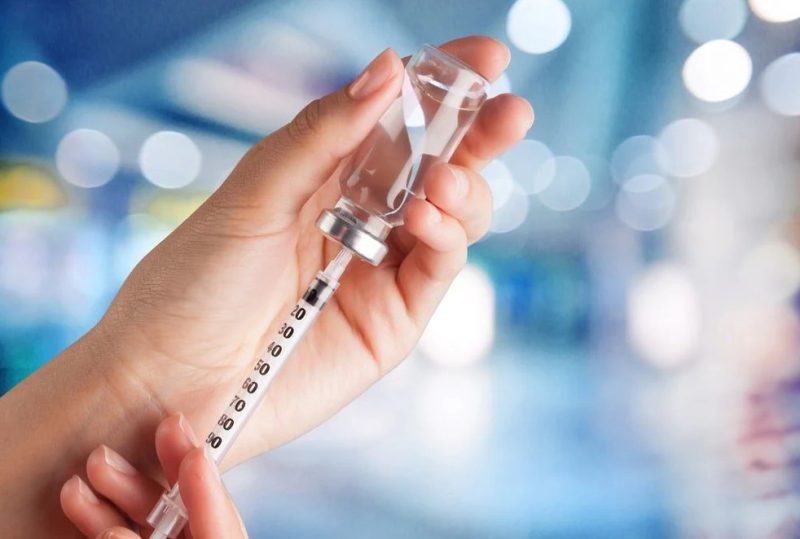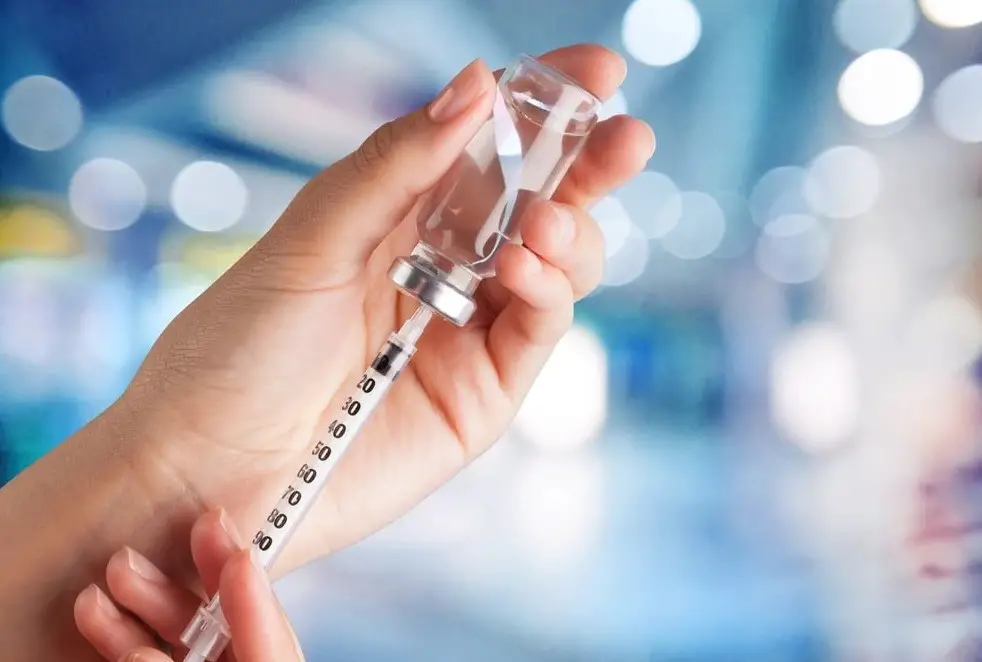Measuring small liquid doses with precision is critical in healthcare, especially when using insulin syringes. A 1 ml insulin syringe is commonly used not only for insulin but also for other injectable medications that require very accurate dosing. If you need to measure 0.5 ml, which equals 50 insulin units on a U-100 syringe, understanding how to read the markings correctly ensures safety and effectiveness.
This article provides a step-by-step guide on how to measure 0.5 ml on a 1 ml insulin syringe accurately, explains syringe markings, highlights common mistakes to avoid, and shares professional recommendations. Information is referenced from trusted U.S. medical sources, including the Centers for Disease Control and Prevention (CDC), the U.S. Food and Drug Administration (FDA), and National Institutes of Health (NIH).
Understanding Insulin Syringe Measurements

The relationship between ml and insulin units
-
A 1 ml U-100 insulin syringe holds 100 insulin units.
-
Each unit corresponds to 0.01 ml.
-
Therefore:
-
0.5 ml = 50 units
-
0.25 ml = 25 units
-
1 ml = 100 units
-
This standardized conversion is crucial because insulin syringes are often labeled in units, not milliliters. According to the American Diabetes Association, patients must be trained to read units correctly to avoid underdosing or overdosing.
Why precision matters
Even a small miscalculation can significantly affect blood sugar levels or medication outcomes. For example, injecting 55 units instead of 50 (0.55 ml vs. 0.5 ml) may cause hypoglycemia in people with diabetes. The FDA highlights that misreading insulin syringes is a common medication error that patients and caregivers should actively prevent.
Anatomy of a 1ml Insulin Syringe
Key parts to recognize
-
Barrel – the clear cylinder marked with unit measurements.
-
Plunger – the black rubber tip that moves up and down inside the barrel.
-
Needle – attached to the barrel, usually short and fine for subcutaneous injection.
-
Cap – protects the sterile needle before use.
Understanding the barrel markings is essential because that’s where you’ll measure 0.5 ml.
Reading the barrel markings
-
Most 1 ml insulin syringes have major lines for every 10 units (0.1 ml).
-
Smaller lines in between mark individual units (0.01 ml).
-
To measure 0.5 ml, align the plunger tip with the 50-unit mark.
According to the CDC’s injection safety guidelines, aligning the plunger tip correctly prevents under- or overdosing.
Step-by-Step Guide: Measuring 0.5ml on a 1ml Insulin Syringe
Step 1: Prepare the syringe
-
Wash your hands thoroughly with soap and water.
-
Remove the syringe from sterile packaging.
-
Keep the needle capped until you are ready to draw the medication.
Step 2: Identify the correct marking
-
Hold the syringe at eye level.
-
Locate the 50-unit line (0.5 ml) on the barrel.
-
Confirm the spacing by checking that the line sits halfway between 0.0 ml and 1.0 ml.
Step 3: Draw the medication
-
Insert the needle into the vial and pull back the plunger.
-
Slowly draw medication until slightly past the 50-unit line.
-
Gently push the plunger forward to expel air bubbles and adjust the level until it rests exactly at 0.5 ml (50 units).
Step 4: Double-check before injecting
-
Hold the syringe upright and re-verify that the plunger’s top edge aligns precisely with the 50-unit line.
-
Ask a caregiver or healthcare provider to confirm if you are unsure.
Common Mistakes to Avoid
Misreading the plunger position
One of the most frequent mistakes when measuring 0.5 ml on a 1 ml insulin syringe is misinterpreting where to read the plunger. The black rubber stopper at the end of the plunger has a top edge, bottom edge, and curved surface, which can make it confusing for beginners. The correct reading point is always the top flat edge of the rubber stopper — the part that is closest to the needle.
For example, if you need 0.5 ml (50 units), the top edge of the stopper must line up exactly with the 50-unit mark on the syringe barrel. If you mistakenly read from the bottom of the stopper, you may inject more than the prescribed dose, which could cause hypoglycemia if you are taking insulin. On the other hand, reading from the middle may lead to an underdose, making the medication less effective. According to the CDC’s injection safety guidelines, always taking the time to verify the plunger alignment at eye level helps prevent this type of dosing error.
Skipping air bubble removal
Another common error is failing to remove air bubbles from the syringe after drawing the medication. Air bubbles may seem harmless, but they take up space inside the barrel and displace liquid medication. This means that even if the plunger appears to be at the correct line, the true amount of medicine in the syringe is actually less than intended.
To avoid this, gently tap the side of the syringe with your finger to bring air bubbles to the top. Then push the plunger slightly until the bubbles are expelled and only liquid remains in the barrel. Afterward, recheck that the plunger is still aligned at the 0.5 ml (50-unit) line. Skipping this step can result in underdosing, which, in the case of insulin, may lead to uncontrolled blood sugar and long-term complications. The FDA emphasizes the importance of correct syringe preparation to ensure full medication delivery.
Using the wrong syringe type
Not all syringes are the same, and choosing the wrong type can cause dangerous confusion. Insulin syringes are specifically designed and labeled in units, which makes them the safest option for measuring insulin. However, some people mistakenly use standard ml-marked syringes that are not calibrated for insulin units. For instance, on a 1 ml tuberculin syringe, the markings may look similar but correspond directly to milliliters, not insulin units.
This difference can lead to serious dosing mistakes. For example, drawing 0.5 ml on a tuberculin syringe equals 0.5 ml, but if interpreted as “50 insulin units,” the patient may inject the wrong amount. The American Diabetes Association advises patients to always use syringes intended for insulin to maintain accuracy and safety. If you are unsure, ask your pharmacist or healthcare provider to confirm that your syringes are unit-marked for U-100 insulin.
Why Measuring 0.5 ml Accurately Is Important
For diabetes management
For people with diabetes, accurate measurement of insulin is essential to maintaining balanced blood sugar levels throughout the day. Insulin is a powerful hormone, and even small deviations from the prescribed dose can make a big difference. Injecting more than required may result in hypoglycemia (dangerously low blood sugar), leading to symptoms such as dizziness, confusion, or even loss of consciousness. On the other hand, taking less than prescribed can cause hyperglycemia, which increases the risk of long-term complications like nerve damage, kidney disease, and vision problems.
By measuring 0.5 ml (50 units) exactly on a 1 ml insulin syringe, patients ensure that their treatment works as intended. According to the American Diabetes Association, consistent dosing helps improve energy stability, prevent diabetes-related emergencies, and enhance overall quality of life.
For other injectable medications
Insulin syringes are not only used for insulin — they are also commonly employed for other medications that require small, precise volumes. Examples include growth hormones, certain fertility treatments, vitamin B12 injections, and some pediatric medications. In these cases, accuracy is equally important because the therapeutic window — the safe and effective dosage range — can be very narrow.
If too much medication is injected, side effects may intensify, ranging from mild nausea to more severe complications depending on the drug. If too little is injected, the treatment may not work effectively, wasting both time and resources. By learning how to measure 0.5 ml properly on an insulin syringe, patients and caregivers reduce the risk of ineffective or harmful dosing.
For patient safety
Accurate medication measurement is directly tied to patient safety. According to NIH MedlinePlus, dosing errors are one of the most preventable causes of hospital visits and emergency care. Inaccurate measurements not only compromise treatment outcomes but can also place unnecessary strain on healthcare systems.
By taking the time to measure 0.5 ml correctly, patients lower the risk of complications, avoid medication wastage, and gain peace of mind that they are following their treatment plan properly. For caregivers, especially those assisting children or elderly patients, precision reinforces trust and ensures the medication is both safe and effective.
Tips for Ensuring Accuracy
Use proper lighting and positioning
Lighting and positioning play a critical role in accurate syringe measurement. If the environment is too dim, it becomes easy to misread the markings or mistake one line for another. Always measure in a bright, well-lit area, preferably near natural light or under a strong desk lamp. Hold the syringe at eye level so that your line of sight is parallel to the markings on the barrel. Looking from above or at an angle can create a visual distortion known as the parallax effect, which may cause you to over- or underestimate the volume. Taking a few extra seconds to align correctly ensures your dose of 0.5 ml is measured precisely.
Mark your syringe for clarity
For patients who frequently use the same dosage — such as 0.5 ml (50 units) — it can be helpful to mark the correct line for faster identification. With your healthcare provider’s approval, you may place a small piece of colored tape or ask them to highlight the correct line with a marker. This approach reduces the risk of confusion, especially for individuals with poor eyesight or those new to insulin therapy. While markings should never cover other measurement lines, a small visual cue can provide extra confidence and speed during the preparation process.
Double-check with a healthcare professional
If you are new to injectable medications, it is wise to have your technique observed and corrected by a pharmacist, nurse, or doctor. Healthcare professionals can demonstrate the correct way to hold the syringe, read the plunger, and remove air bubbles. Even if you have been injecting for years, a quick check-up ensures you are not unknowingly repeating a small mistake. According to the CDC, patient education is one of the most effective ways to reduce medication errors.
Use magnifiers if needed
Patients with reduced vision, such as the elderly or those with diabetic eye complications, may struggle to distinguish syringe markings clearly. In such cases, using handheld magnifiers, clip-on magnifying glasses, or even smartphone magnification apps can make the process safer and easier. Ensuring that the 0.5 ml (50-unit) line is clearly visible prevents mistakes and gives patients greater independence in managing their own care.
Alternatives and Helpful Tools
Insulin pens
Insulin pens are pre-filled devices that allow users to dial in the exact number of units they need. For example, if you require 0.5 ml (50 units), you simply turn the dial until it shows “50” and inject. This eliminates the need to interpret syringe markings, thereby reducing the chance of human error. According to the American Diabetes Association, insulin pens are particularly beneficial for people who need multiple daily injections or those who find syringes difficult to use. However, pens are typically limited to insulin and may not be suitable for other injectable medications.
Digital dosing aids
Technology is also making medication administration more accurate. Some digital devices can attach to a syringe and provide a readout of the volume drawn. These tools are especially useful for patients who require frequent, precise measurements or for caregivers administering medication to children. Digital aids can track usage history and give alerts if the dose drawn does not match the prescribed amount, offering an extra layer of safety.
Pre-filled syringes
For certain medications, including some biologics, fertility treatments, and vitamin injections, pharmacies or clinics may provide pre-filled syringes with the exact prescribed dose. This option eliminates the need for patients to measure at all, reducing the risk of dosing errors and improving convenience. While not available for all medications, pre-filled syringes can be an excellent choice for individuals who feel anxious about self-measuring or who have limited dexterity.
Frequently Asked Questions (FAQs)
How many insulin units are in 0.5ml?
In a U-100 insulin syringe, 0.5 ml equals 50 units.
Can I use a regular 1ml syringe instead of an insulin syringe?
It is not recommended. Regular syringes may not have the fine unit markings needed for accurate insulin dosing.
What if I accidentally draw slightly more than 0.5ml?
Carefully push the plunger forward until it aligns with the 50-unit mark. Never try to estimate or inject extra.
How can I practice measuring correctly?
Some healthcare providers suggest practicing with water to build confidence before drawing medication.
Where can I find official guidance on insulin syringe use?
You can find reliable instructions at the CDC Injection Safety site and the FDA’s insulin safety page.
Conclusion
Accurately measuring 0.5 ml on a 1 ml insulin syringe is a vital skill for anyone who requires precise injectable medication. By aligning the plunger with the 50-unit mark, eliminating air bubbles, and double-checking your syringe before injection, you can ensure safe and effective treatment.
When in doubt, always consult a healthcare professional. Using trusted resources from organizations like the CDC, FDA, and NIH helps patients and caregivers follow safe injection practices.



